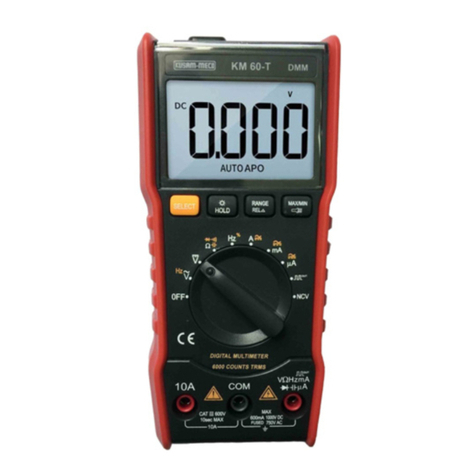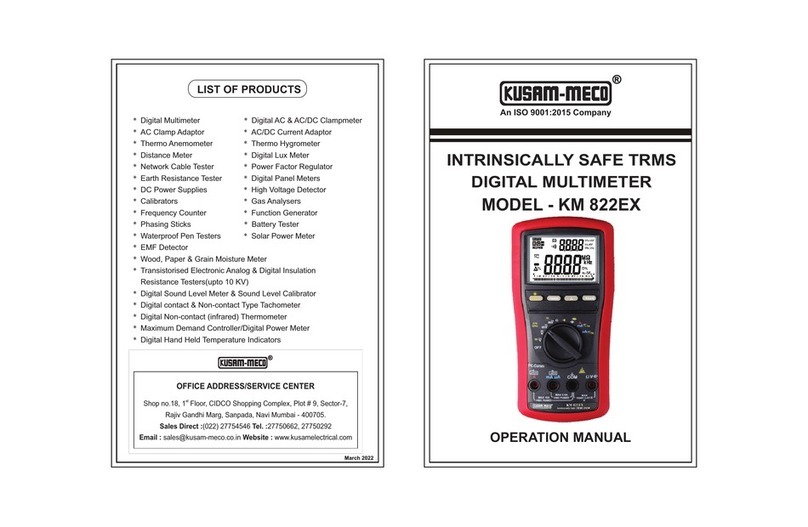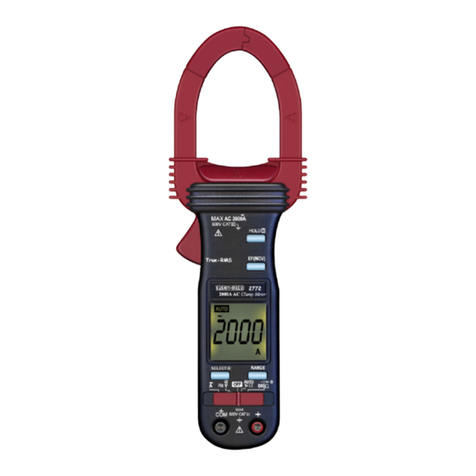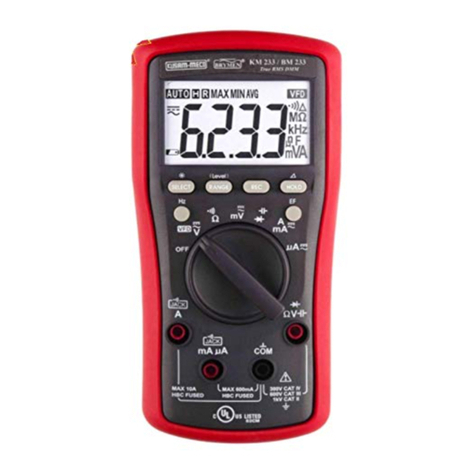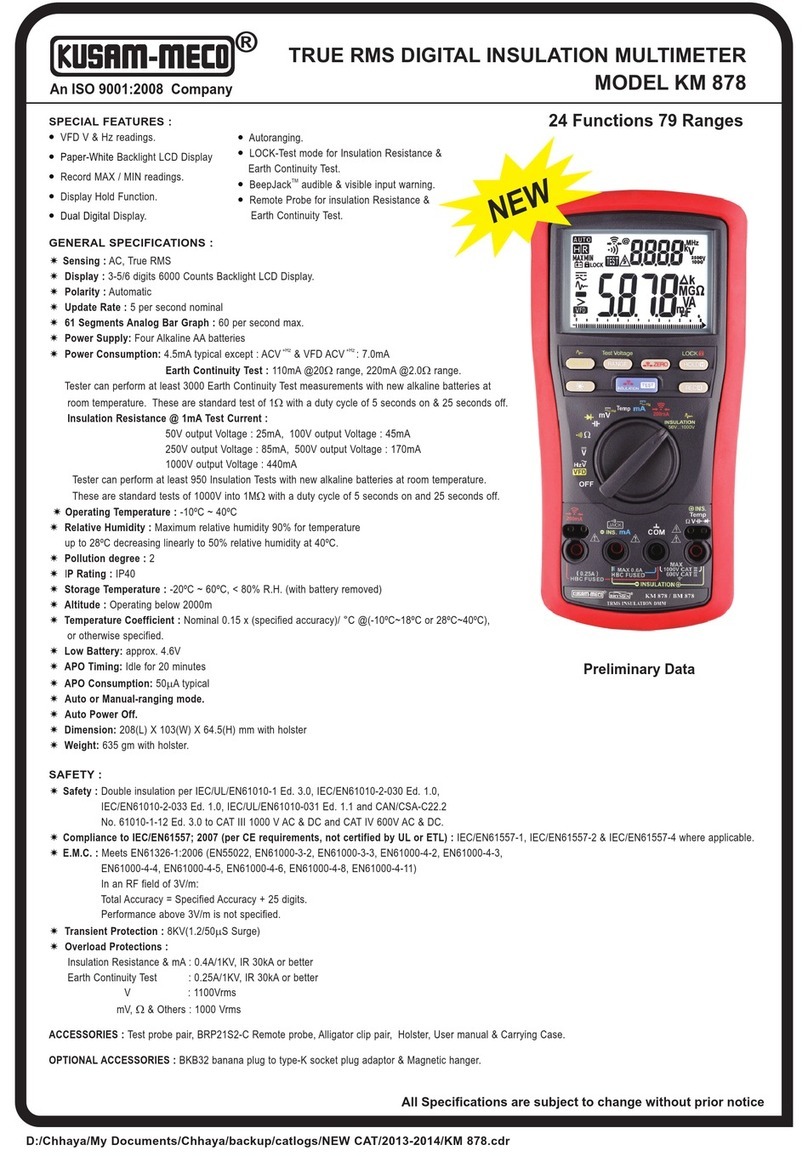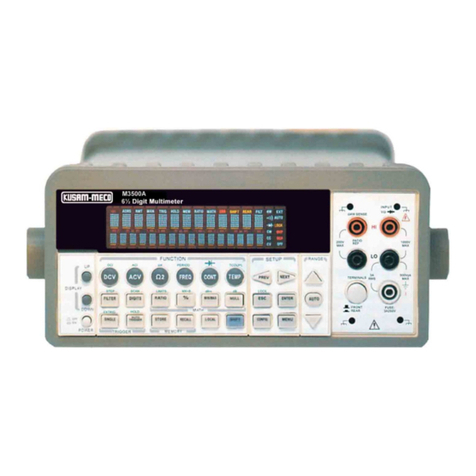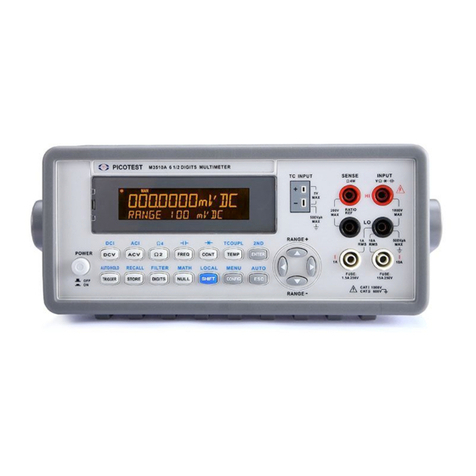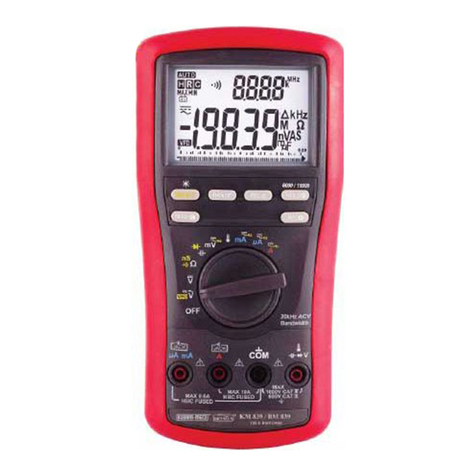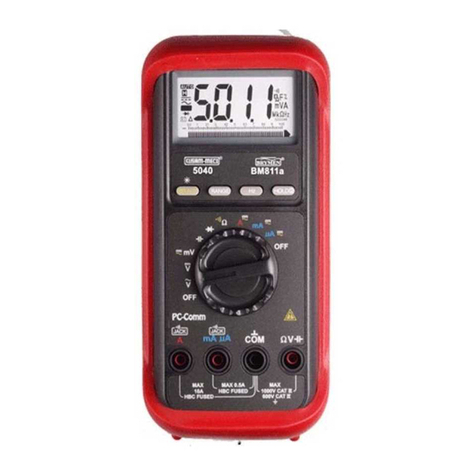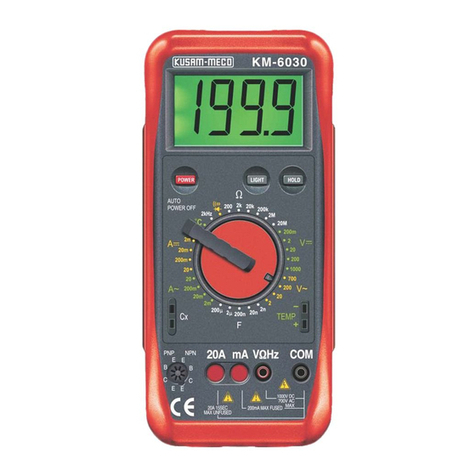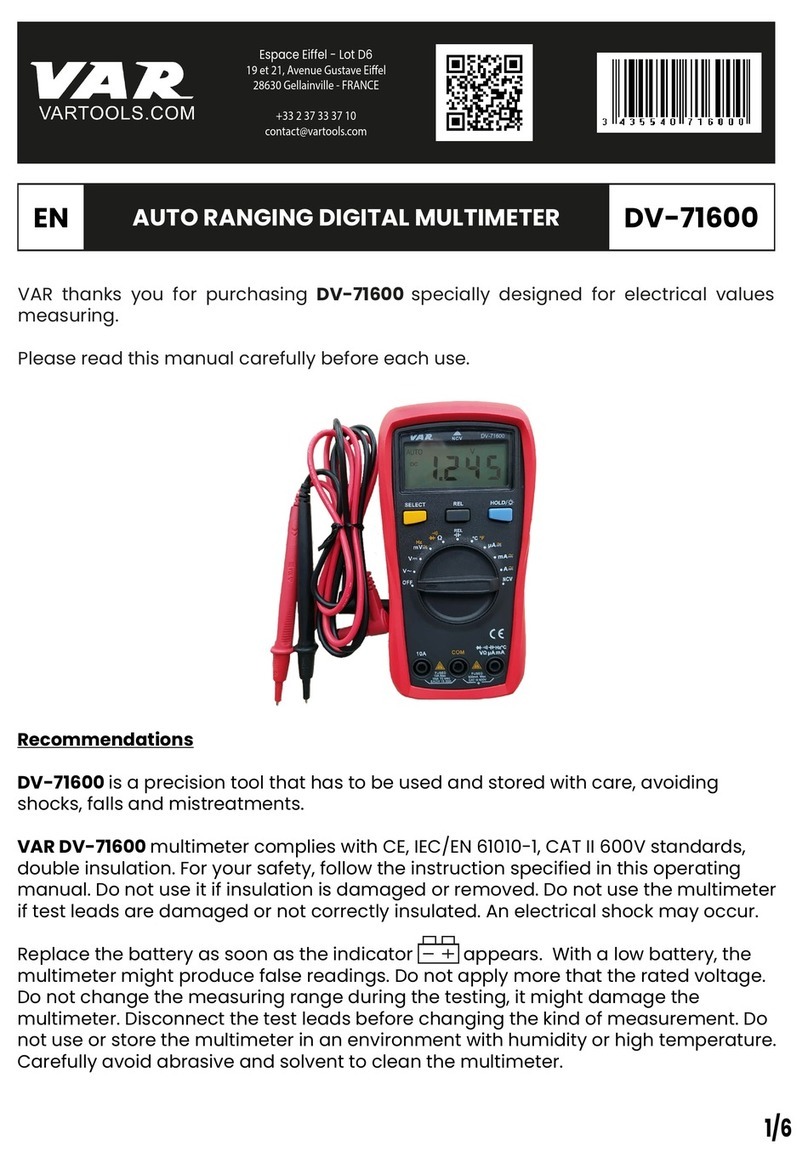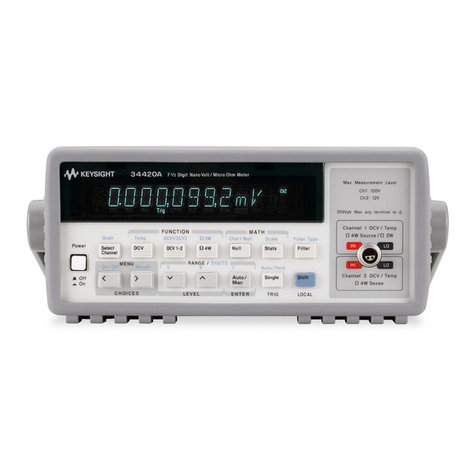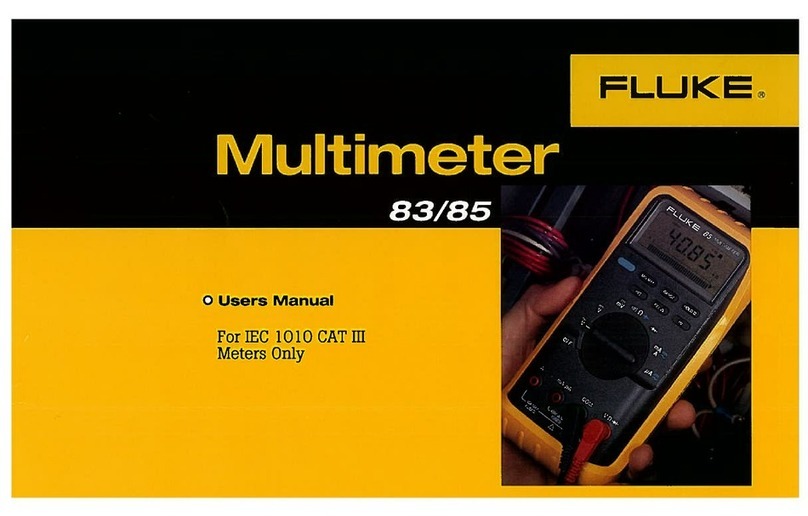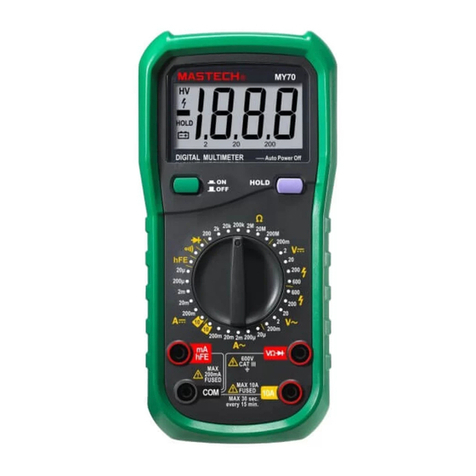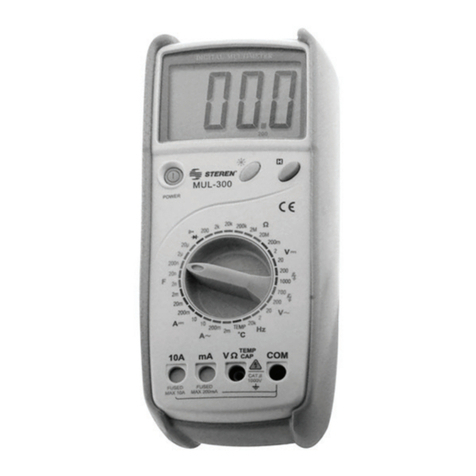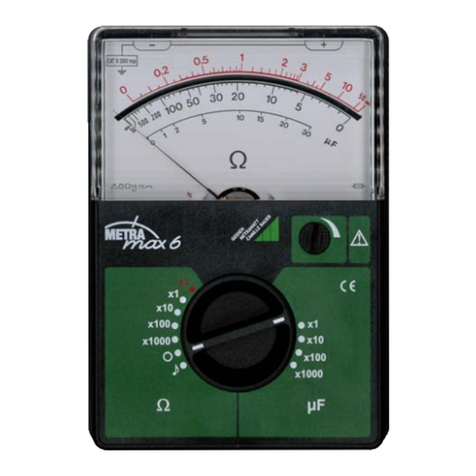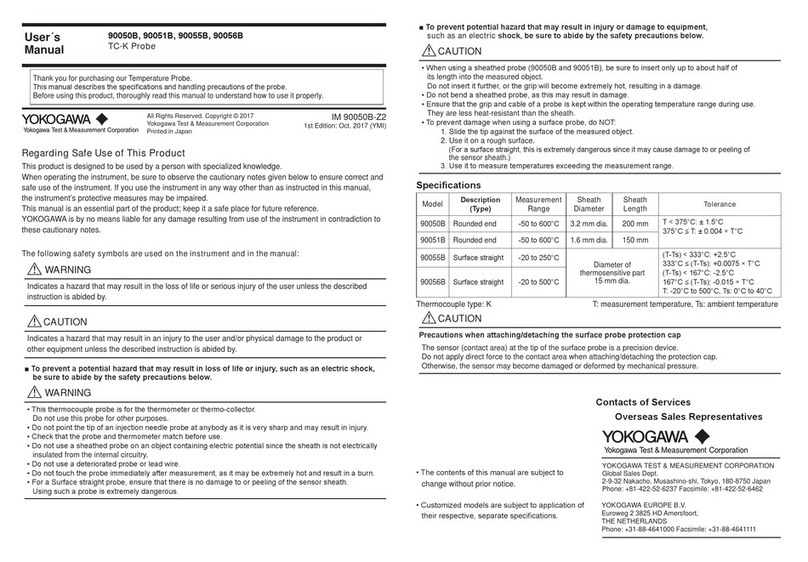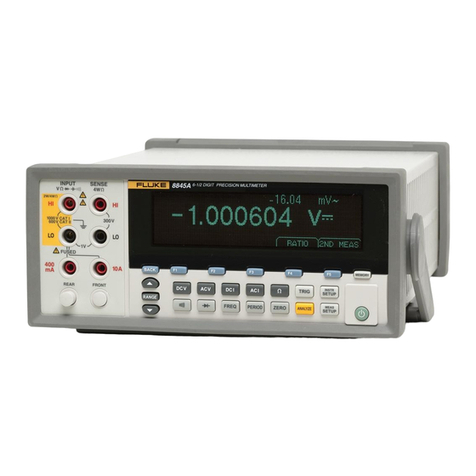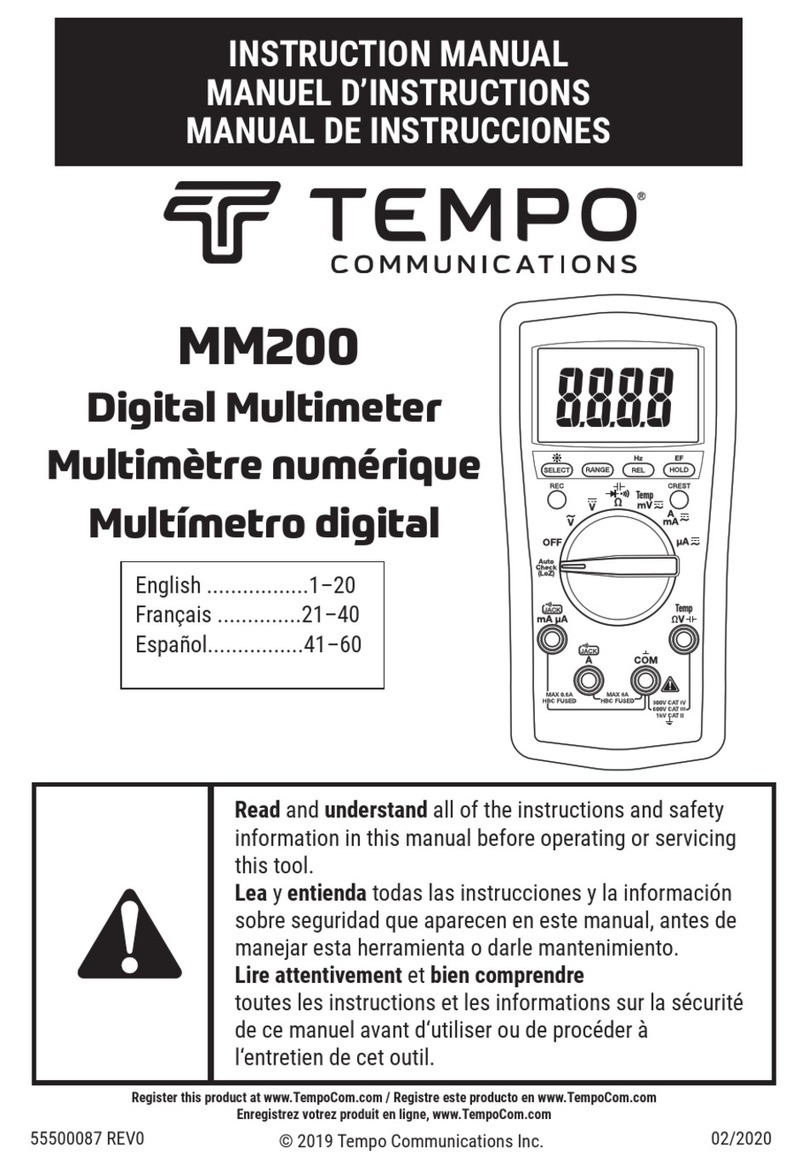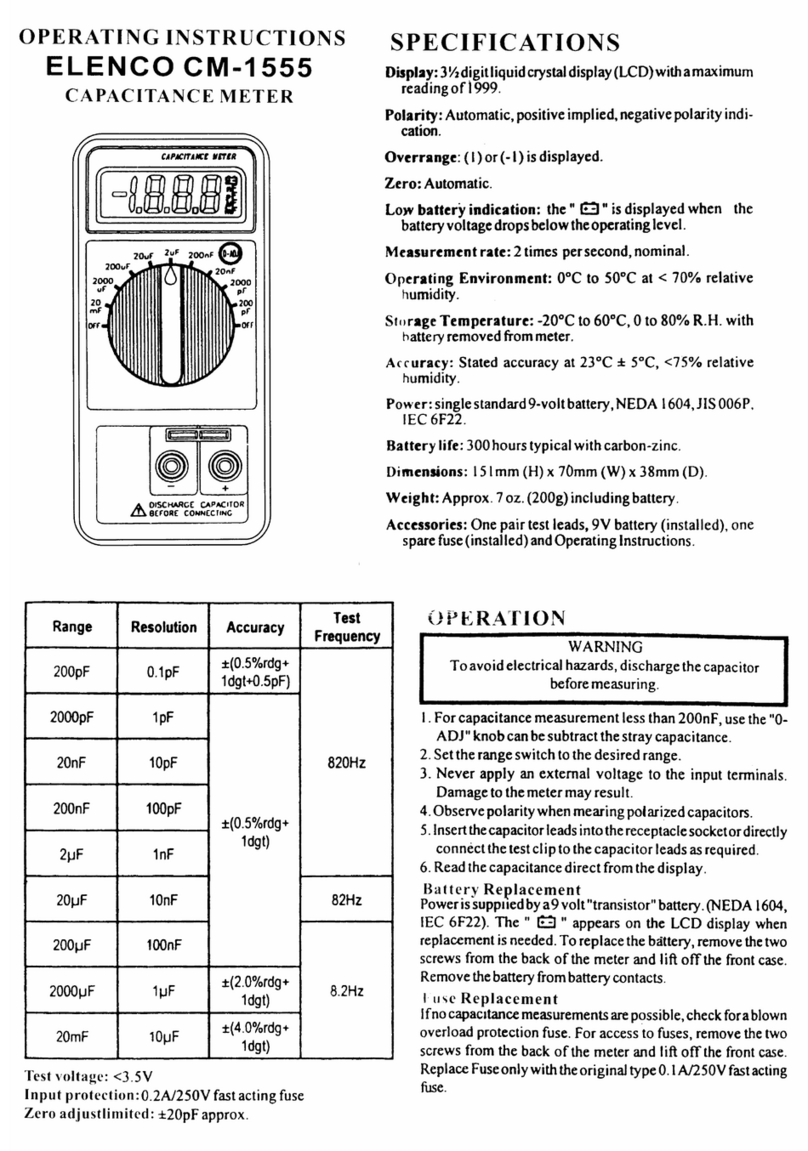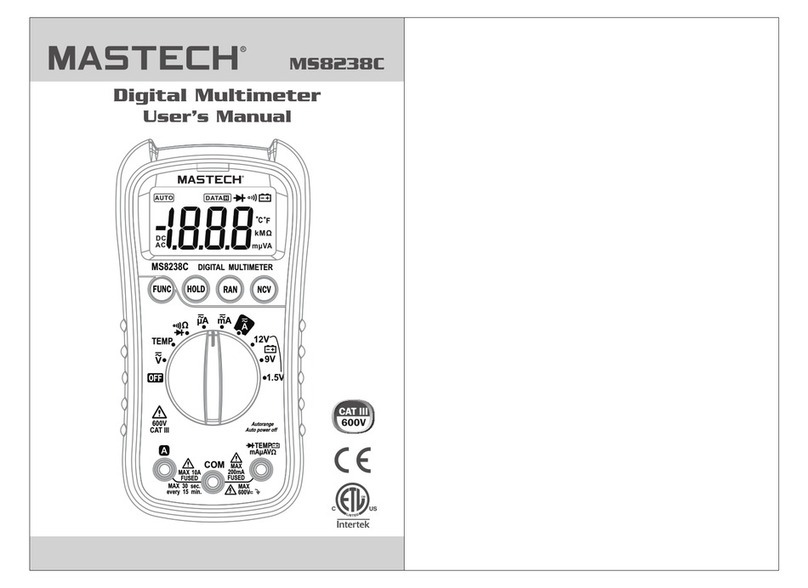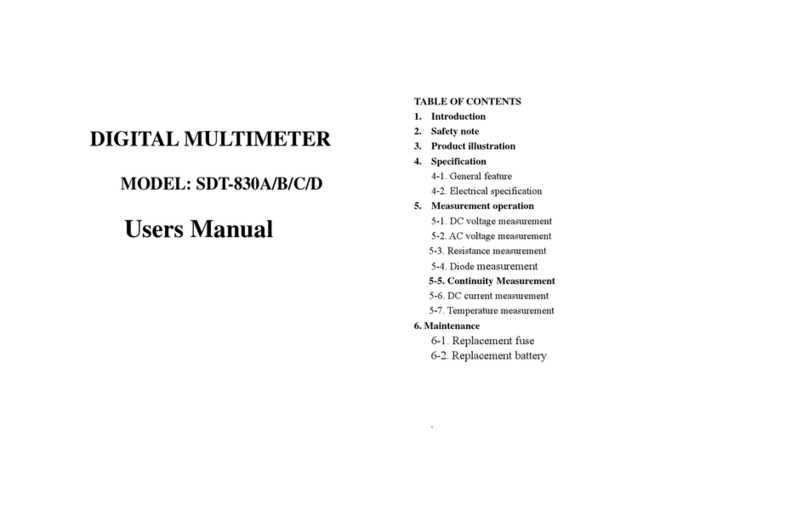
... 8 ...
NOTE :
1. If the voltage under measured is unknown start from the highest range ., then the proper range
2. If only MSD display “ ”, it means overrange, should set to a higher range.OL
3. Do not input a voltage over 1000V, or, the circuit might be damaged.
4. Be careful when measuring high voltage circuit.
4.2 ACV
1. Connect the red test lead to V terminal and the black one to “COM” terminal.ΩHz
2. Set the knob to ACV range, connect the test leads across to the circuit under measured.
NOTE :
1. See DCV measuring NOTE 1,2,4.
2. Do not input a voltage over 1000V rms, in this case, reading is workable but the circuit might be damaged.
3. To get more accuracy, it’s better that the more than 10% of full range when selecting the range.
4. The meter might be not zero at ACV range, it’s normal and has no effect on the reading.
4.3 DCA:
1. Connect the Black test lead to “COM” terminal and the red one to “mA” terminal (max.2A) or “20A” terminal.
2. Set the knob to DCA range, connect the test leads across to the circuit under measured, the polarity will be
displayed with the voltage reading value.
4. OPERATION
4.1 DCV
The meter is driven by 220V / 110V AC, when operating, connect the power to power plug firstly then socket
Each meter is equipped with one pair of testleads as standard attachment, to insert the turn on the power.
proper jack in front panel is banana plug, connect the pointed end of the testlead to the circuit under test.
The input terminal in front panel can make measurement upto 1000V, 20A and 20M .W
Note : before connecting the circuit under measured, be sure that the measured value should not be over the
limit specified in front panel.
1. Connect the black test lead to “COM” terminal and the red one to “V W Hz” terminal.
2. Set the knob to DCV range, connect the test leads across to the circuit under measured, the polarity will be displayed
with the voltage reading value.
